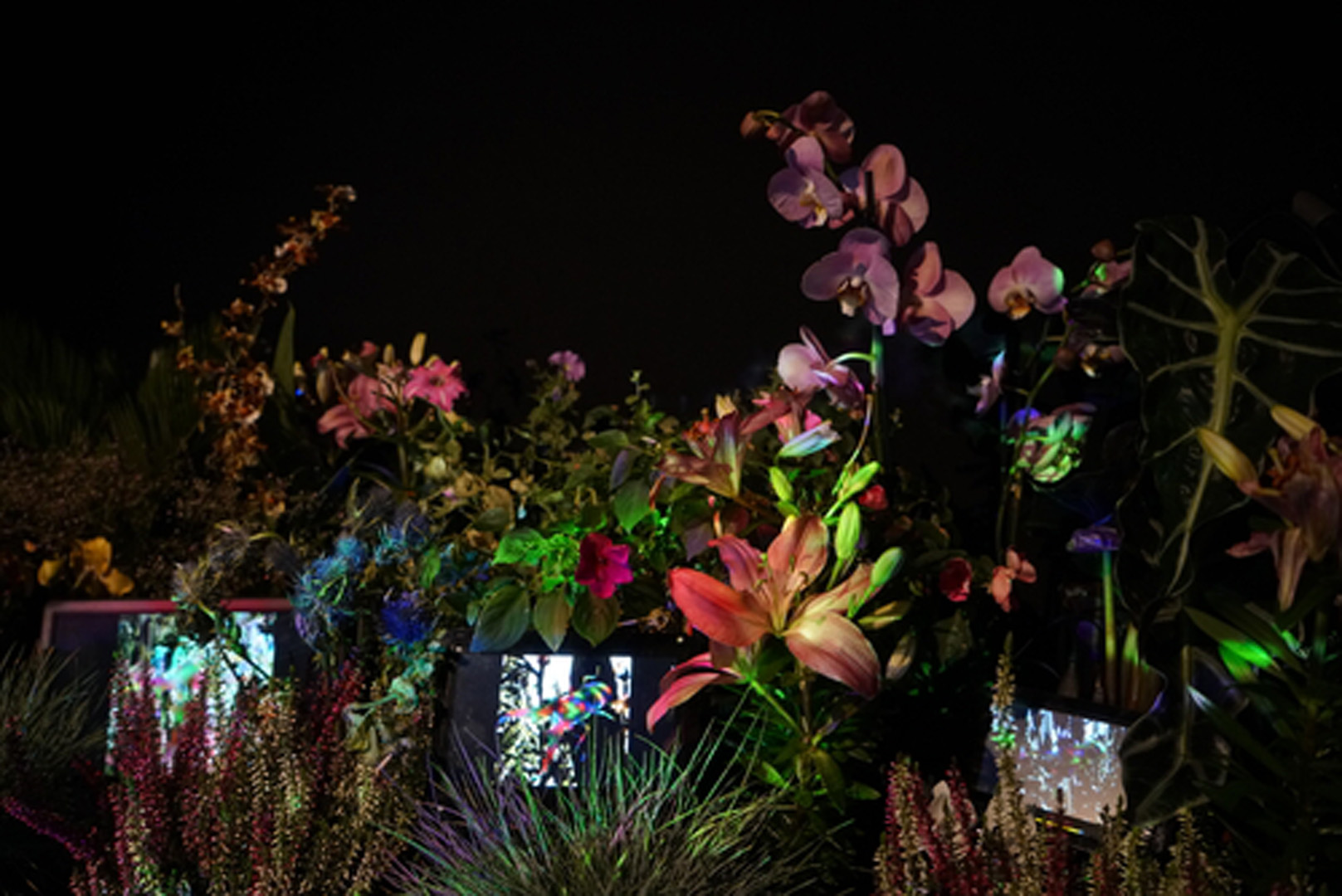“Mimicry: Genetic-Algorithm-Based Real-Time System of Virtual Insects in a Living Environment – A New and Altered Nature” by Wu and Huang
Conference:
Type(s):
Title:
- Mimicry: Genetic-Algorithm-Based Real-Time System of Virtual Insects in a Living Environment - A New and Altered Nature
Presenter(s)/Author(s):
Abstract:
The authors have collaborated on a machine learning multiscreen video installation powered by computer algorithms and inspired by mimicry in the natural world. The artwork explores a pseudo-environment loop system in nature and artificial mechanical organisms combining living flowers with projectors, webcams, and computer monitors. Technically, the software adopts a genetic algorithm to simulate the process of mimicry; conceptually, this real-time art installation is in conversation with Nam June Paik’s piece TV Garden. The project explores the possibilities of integrating artificial intelligence and nature in the landscape of the future.
References:
1. boredomresearch. 2016. AfterGlow. https://boredomresearch.net/wp/portfolio/afterglow/
2. Sofia Crespo. 2020. Artificial remnants. https://artificialremnants.com
3. Jake Elwes. 2019. CUSP. https://www.jakeelwes.com/project-cusp.html
4. Robert Fisher, Simon Perkins, Ashley Walker, and Erik Wolfart. 1996. 8-bit Color Images: Hypermedia Image Processing Reference. John Wiley & Sons, Ltd.
5. Ian Goodfellow, Jean Pouget-Abadie, Mehdi Mirza, Bing Xu, David Warde-Farley, Sherjil Ozair, Aaron Courville, and Yoshua Bengio. 2014. Generative adversarial networks. In Proceedings of the International Conference on Neural Information Processing Systems (NIPS 2014).
6. Donna Jeanne Haraway. 2013. Simians, Cyborgs, and Women: The Reinvention of Nature. Routledge, New York, NY.
7. N. Katherine Hayles. 1999. How We Became Posthuman: Virtual Bodies in Cybernetics, Literature, and Informatics. University of Chicago Press, Chicago, IL.
8. John H. Holland. 1984. Genetic algorithms and adaptation. In Oliver G. Selfridge, Edwina L. Rissland, and Michael A. Arbib (Eds.) Adaptive Control of Ill-Defined Systems. NATO Conference Series (II Systems Science) 16. Springer, Boston, MA. DOI: https://doi.org/10.1007/978-1-4684-8941-5_21
9. Haru Hyunkyung Ji and Graham Wakefield. 2017. Biotopes Computanionnels (Computational Biotopes). In Stream 04: Les Paradoxes du Vivant, 304–316.
10. Walter Lippmann. 1946. Public Opinion. Transaction Publishers.
11. Melanie Mitchell. 1996. An Introduction to Genetic Algorithms. MIT Press, Cambridge, MA.
12. Neri Oxman, Markus Kayser, Jared Laucks, and Michal Firstenberg. 2013. Robotically controlled fiber-based manufacturing as case study for biomimetic digital fabrication. In Green Design, Materials and Manufacturing Processes, 473.
13. Nam June Paik. 1974–1977. TV Garden. https://www.tate.org.uk/whats-on/tate-modern/exhibition/nam-june-paik/exhibition-guide
14. Misha Rabinovich. 2016. Raised on YouTube: cultural data materialization using plants. In ACM SIGGRAPH 2016 Art Gallery (July 2016), 342–349.
15. Karl Sims. 1991. Artificial evolution for computer graphics. In Proceedings of the 18th Annual Conference on Computer Graphics and Interactive Techniques, July 1991, 319–328.
16. Christa Sommerer and Laurent Mignonneau. 1997. Interacting with artificial life: A-Volve. Complexity 2, 6, 13–22.
17. Stephen Todd and William Latham. 1992. Evolutionary Art and Computers. Academic Press.
18. Darrell Whitley. 1994. A genetic algorithm tutorial. Statistics and Computing 4, 65–85.




